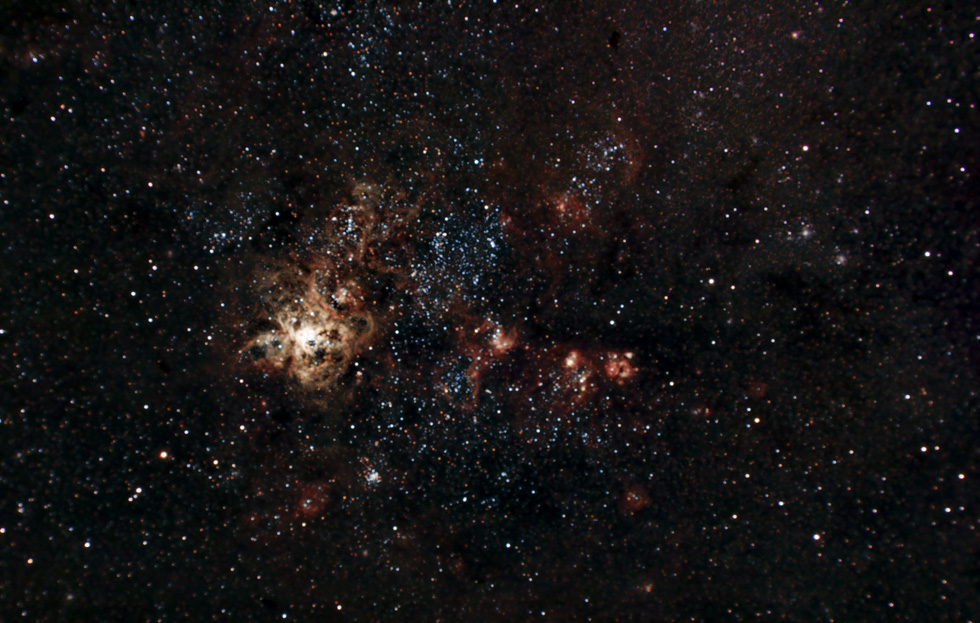|
|
Acquisition |
Processing |
Comments |
| Date: 02/04/2011 |
DeepSkyStacker |
Name: NGC 2070 - Tarantula Nebula Considering its distance of about 160,000 light years, this is an extremely luminous non-stellar object. Its luminosity is so great that if it were as close to Earth as the Orion Nebula, the Tarantula Nebula would cast shadows. In fact, it is the most active starburst region known in the Local Group of galaxies. It is also the largest such region in the Local Group with an estimated diameter of 652 light years. The nebula resides on the leading edge of the LMC, where ram pressure stripping, and the compression of the interstellar medium likely resulting from this, is at a maximum. At its core lies the compact star cluster R136 (approx diameter 35 light years) that produces most of the energy that makes the nebula visible. The estimated mass of the cluster is 450,000 solar masses, suggesting it will likely become a globular cluster in the future.
|
| Location: Greenwood WA (Backyard) | Stacking Mode: Mosaic | |
| Camera: Canon 20D - LP Filter Removed | Alignment Method: Automatic | |
| Optics: Skywatcher ED80. | Stacking Mode: Mosaic | |
| Exposure: 800ASA @ 3 Minutes x 44 | RGB BKG Cal: Yes | |
| Total Exposure: 1 hr 39 mins | Per Channel Cal: Yes | |
| Guiding: DSI on Mead LX200R. | Method: Median Kappa-Sigma K=2/I=5 | |
| Filter: Astronomik CLS-CCD | Darks: Yes | |
| Focus: Bahtinov Mask | Flat: No | |
| Full Details | ||
|
Position in Sky |
PhotoShop CS4 |
|
| RA (J2000): 5h 38m | Levels, Colour Balance, Curves, Saturation Scaling, jpeg Conversion. | |
| DEC (J2000): -69* | ||
| Constellation: Dorado | ||
| Distance: 160,000 Light Years |
